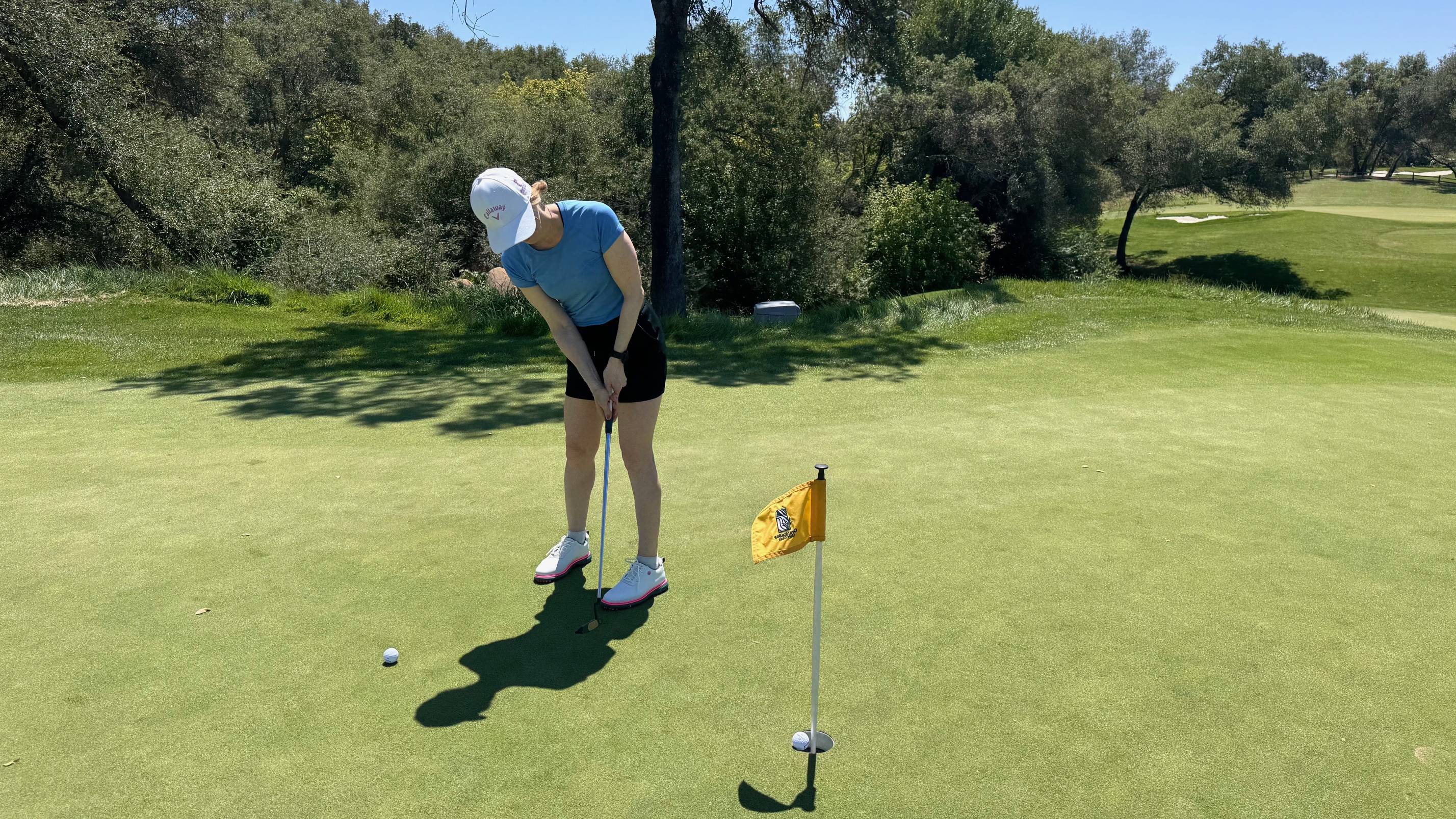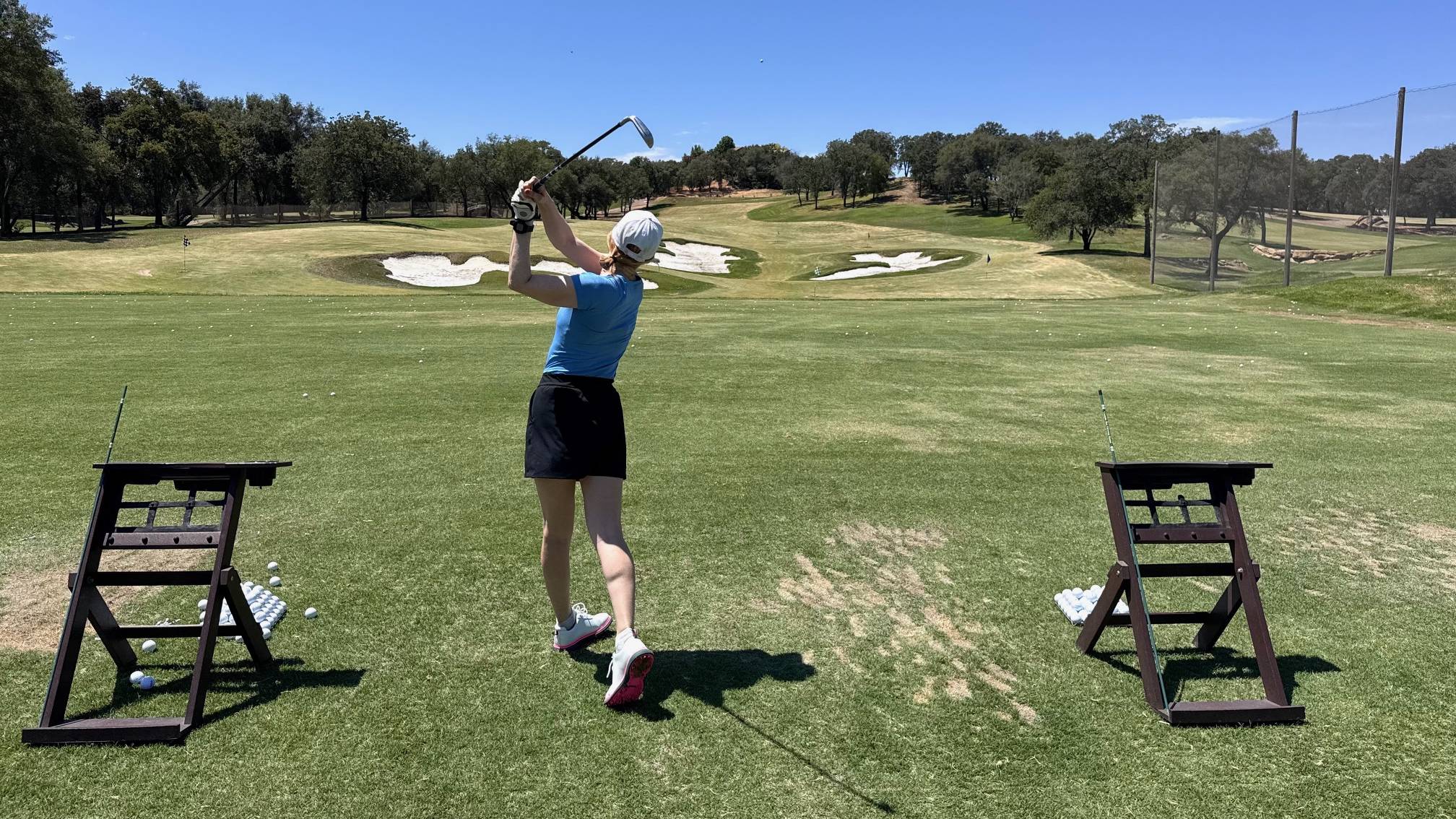My Golf Has Plateaued, So I Asked Two Pros For Advice. Here's What They Said
If you feel that your game has plateaued and you're in a slump, these 5 pro tips will help to get your scores heading in the right direction


The more golf you play, the lower your scores should be, right? That would be nice! It’s typical for golf scores to fluctuate, but when scores start consistently trending in the wrong direction, it’s frustrating, especially when you aren’t sure exactly what’s off. I’m experiencing something similar. I know I’m a better golfer than I was two years ago, and my scores were consistently going down for a while, but now they’ve plateaued.
Sometimes it’s hard for me to tell what’s holding me back, and other times it’s blatantly obvious (like an abundance of 3 putts or a bad case of nerves). I spoke to two teaching professionals, who gave me advice on how to break through this golf scoring slump and prevent my scores from starting to creep up – and most of it involves stepping off the course and getting a different perspective on how I’m approaching each round.
Analyze My Round
When a golfer starts tracking putts, fairways and greens in regulation it becomes clear where she’s losing strokes, says Meredith Lobeck, director of player development at Granite Bay Golf Club in Northern California. Take notes after each hole, putting a check mark down when I hit my goal, like one or two putting or hitting a fairway. I’ll start to see a pattern quickly, says Lobeck, plus get some positive feedback by marking the good things I’m doing on the course, versus the missed shots.
Make A Practice Plan
Once I pinpoint where I need to focus, it’s time to create a plan so I can get the most out of my practice time. Aimlessly going to the driving range won’t improve my golf scores, says Lobeck. Lately, my putter has been giving me trouble, so I need to spend a chunk of my practice time on the putting green, working on those 5 footers that if I don’t practice regularly, start to turn into 2 putts.
Focusing on where I’m currently struggling doesn’t mean ignoring all other aspects of my game. It simply helps create structure during my allotted practice time. An easy way to plan out your time is breaking up your practice into 20 minutes of putting, 20 minutes of short game and 20 minutes of range time, suggests Lobeck. Within those 20 minute increments, you can dial in your specific practice needs.
Calibrating wedge distances is a great place to focus practice for any player, adds PGA Master Professional Kellie Stenzel, who teaches in South Florida. Knowing how far you hit each wedge transforms your short game.

Check My Technique
My driver was my most consistent club in my bag, but over the past few weeks, it’s turned on me. I’ve tried a few things to get my swing back and it works for a bit, but then seems to veer again mid-round.
Subscribe to the Golf Monthly newsletter to stay up to date with all the latest tour news, equipment news, reviews, head-to-heads and buyer’s guides from our team of experienced experts.
Oftentimes, if something is off in our swing, we compensate in another way, creating a second problem, says Stenzel. While it may put a bandaid on things, it doesn’t fix the initial problem, and it typically doesn’t work out in pressure situations like match play, she adds.
Stenzel recommends that while I’m on the range, review my basics, like grip and set up, and connect with a professional who is familiar with my swing, so she can spot what’s off and get to the root of the problem.

Lauren Katims has lost consistency with her driver
Take A Playing Lesson
There’s a huge benefit to taking a lesson on the course instead of the driving range. On the course, the lesson really becomes about course management instead of technique. “It can be completely different how a professional sees things from how you see it,” says Lobeck.
Experiment with hitting a different club off the tee, aiming toward a different point on the green, and laying up versus going for the hero shot. Making smart decisions on the golf course helps with recovery from those missed fairways that can easily rack up my score.
Avoid An Abundance of Advice
It’s easy to go on social media and have hundreds of golf tips thrown at you. The problem is most of these aren’t relatable to your specific swing or problem you’re working on, says Lobeck. Stick to one pro who can explain things to you in a way that resonates and make sure to follow up regularly, before things start to go downhill.
I tend to be reactive with my lessons: When things are not working, then I call for help. Being proactive about my technique (especially because I didn’t grow up playing golf) will help me hold off those bad habits that like to creep in.
Golf progress isn’t linear. I often remind myself that golf is a long-term work in progress and there’s so much more joy in it when I’m not focused on my score. Prioritizing practice and making swing changes on the range (not during a round) makes playing golf more effortless – and enjoyable. As long as I’m learning and having a really good time doing it, that’s a win for me!

Lauren Katims is a freelance writer and editor in Northern California. Over the past couple years, she’s become slightly obsessed with everything golf, including working on the mental aspect of her game as much as the technical skill set.
Lauren is lucky enough to have a group of inclusive and motivating women at her local golf club with whom she plays weekly. Follow along on TikTok @Lkgolfs.
You must confirm your public display name before commenting
Please logout and then login again, you will then be prompted to enter your display name.